The new EPOMAKER x Feker Galaxy80 is an aluminium keyboard in the tenkeyless (TKL) layout, and is available in a fully assembled option. Even though it has more of a premium feel from its aluminium build, the EPOMAKER x Feker Galaxy80 retails for US$106.
Unboxing
Here is what you will find the box:
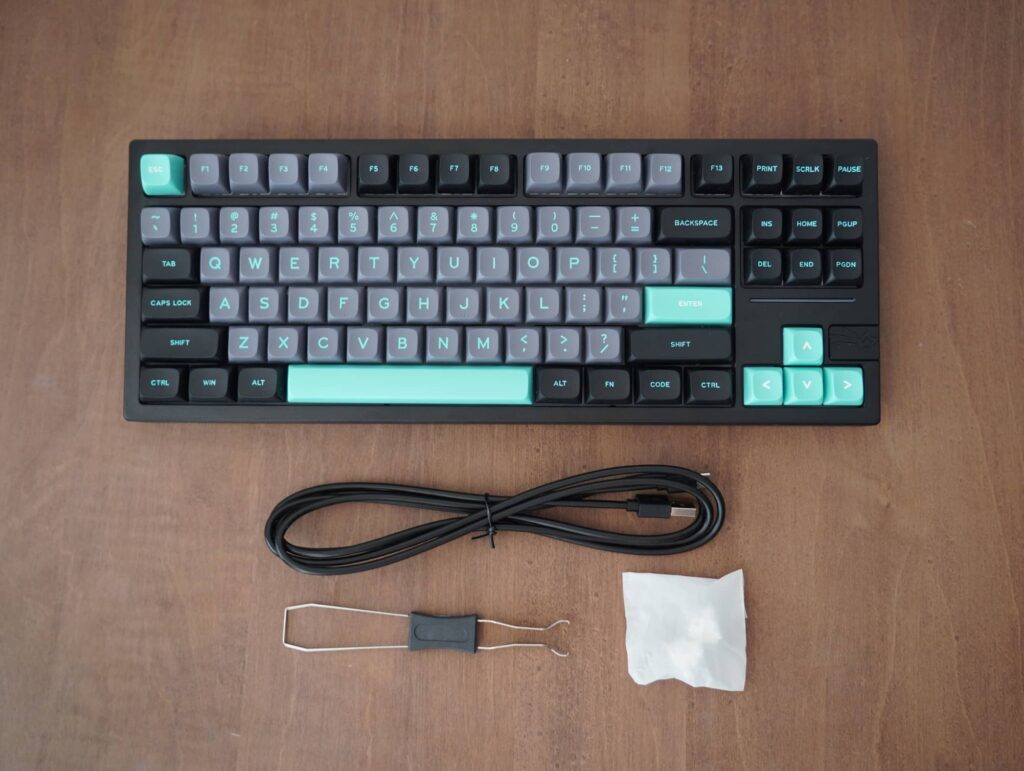

- EPOMAKER x Feker Galaxy80 keyboard
- 2.4G Dongle (hidden in the keyboard)
- Type-C Cable
- 2-in-1 Keycap/Switch Puller
- User Manual
Build quality and design
The Galaxy80 keyboard is available in five colour options – (1) Black, (2) White, (3) Blue, (4) Pink, and (5) Purple. The unit I have is the ‘Black’ variant which comes with matching keycaps design. For the ‘Black’ variant, it is a black grey keyset with mint green accent keys.
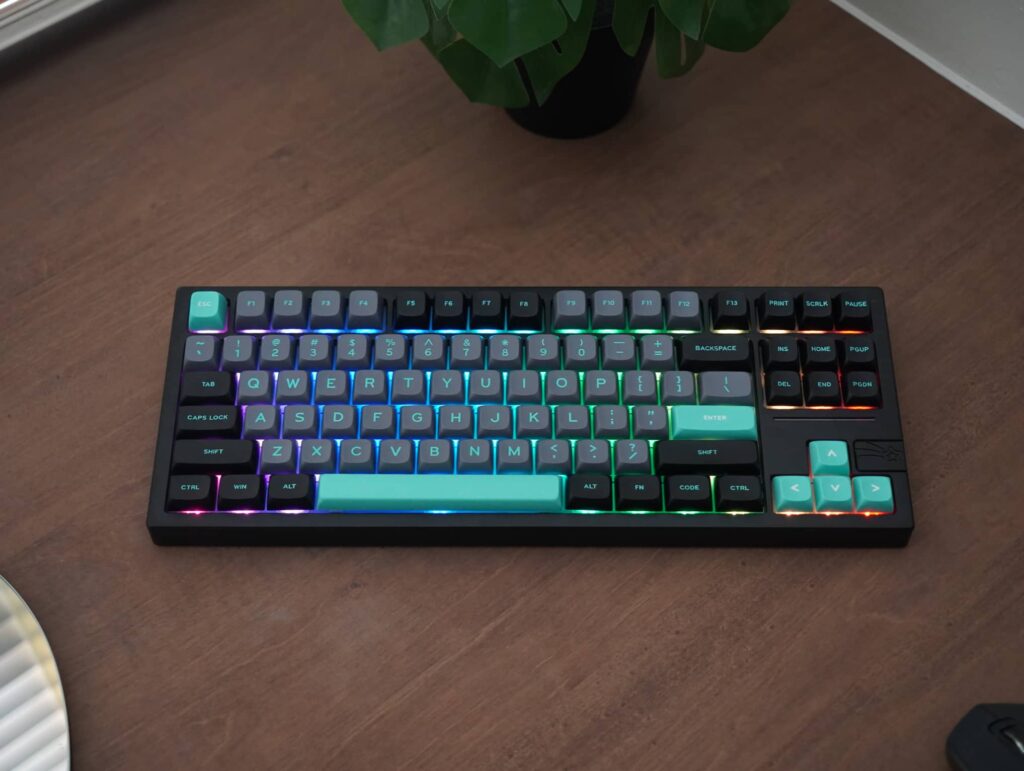

Galaxy80 has a relatively simple design – borders are even on each side and have the typical side profile of the rectangular top resting on a rounded bottom base. The build quality of the Galaxy80 keyboard is pretty good, coming in at an overall weight of 1.7kg. Aluminium used feels robust and has a more textured feel to it. The bundled keycaps are made from PBT plastic, and have a unique MDA profile. Personally, MDA profile is not to my aesthetic taste, but typing on it is quite comfortable due it scooped top and slightly lower profile height.
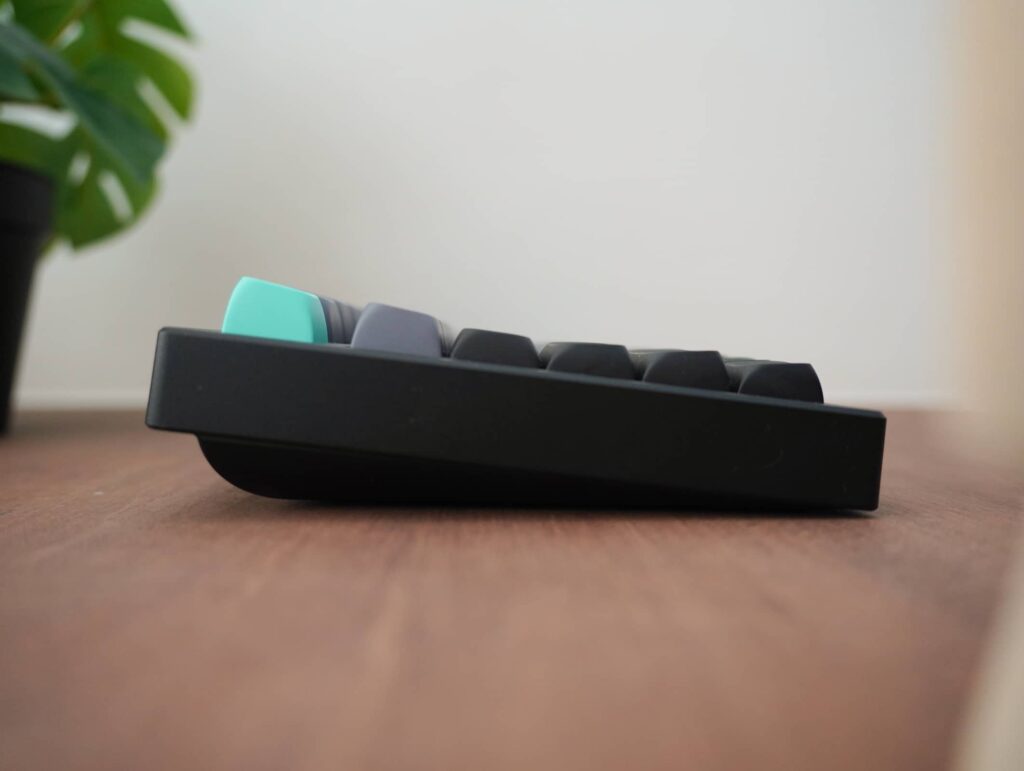

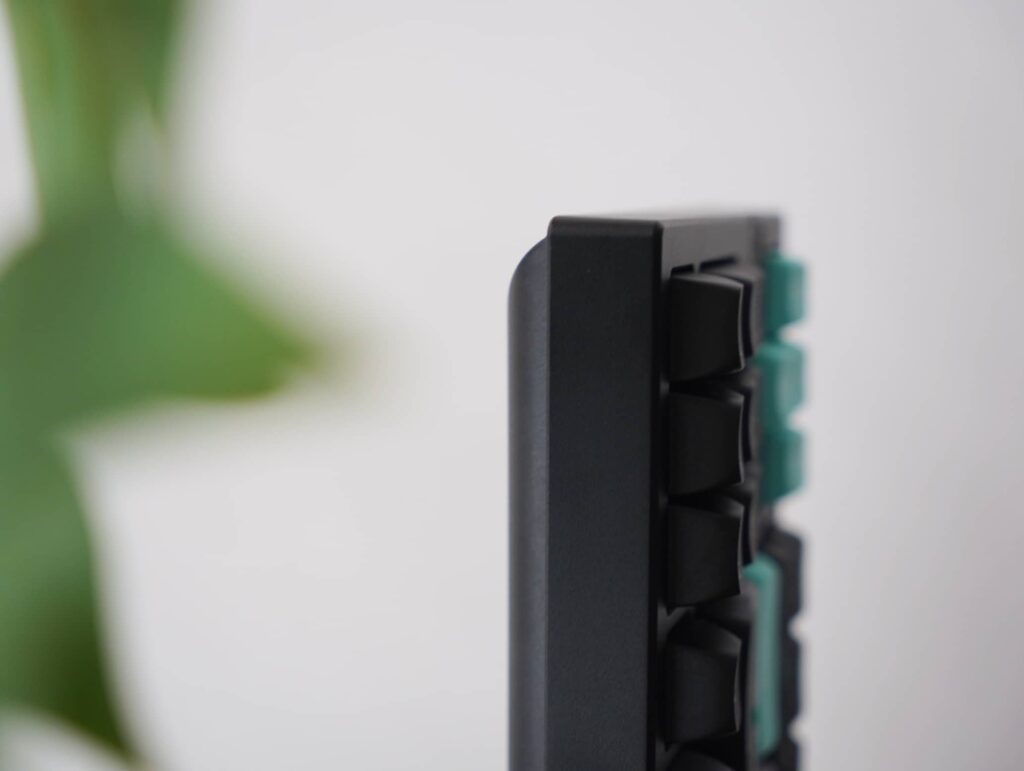

You also get RGB lighting that showcases a clean looking underglow of the keycaps. There are up to 19 RGB lighting effects which you can personalize even more with the app to match your mood or desk setup. There is also a LED strip above the arrow cluster to add an extra design touch to it. But if RGB isn’t your thing, there is an option to turn it off.
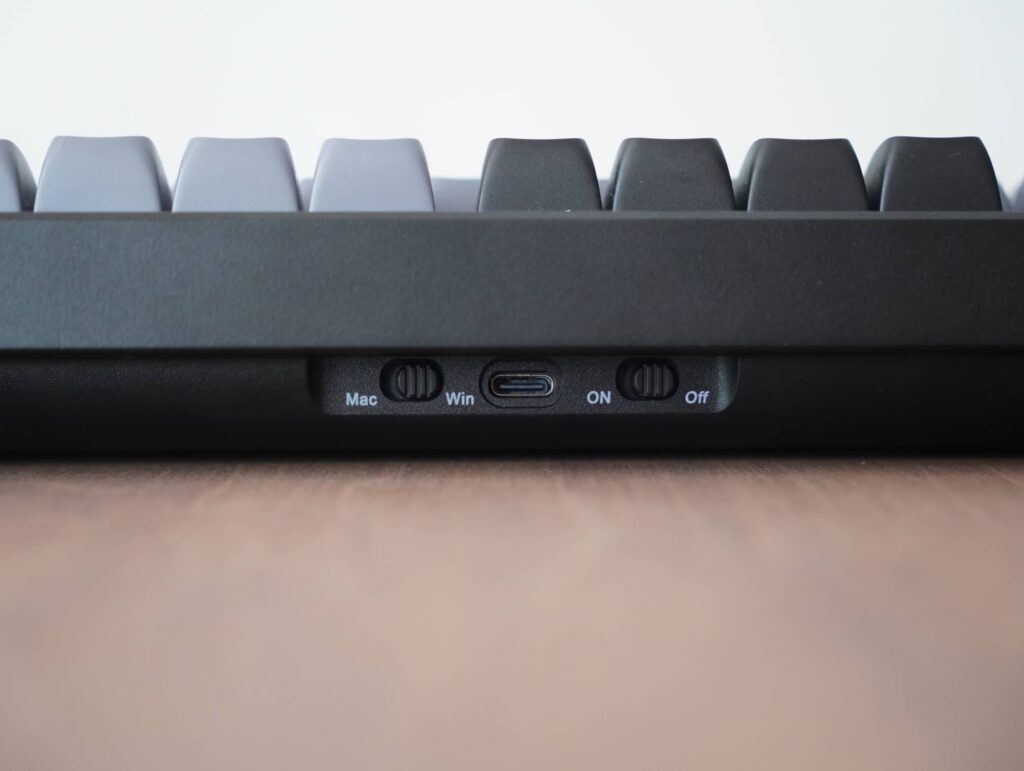

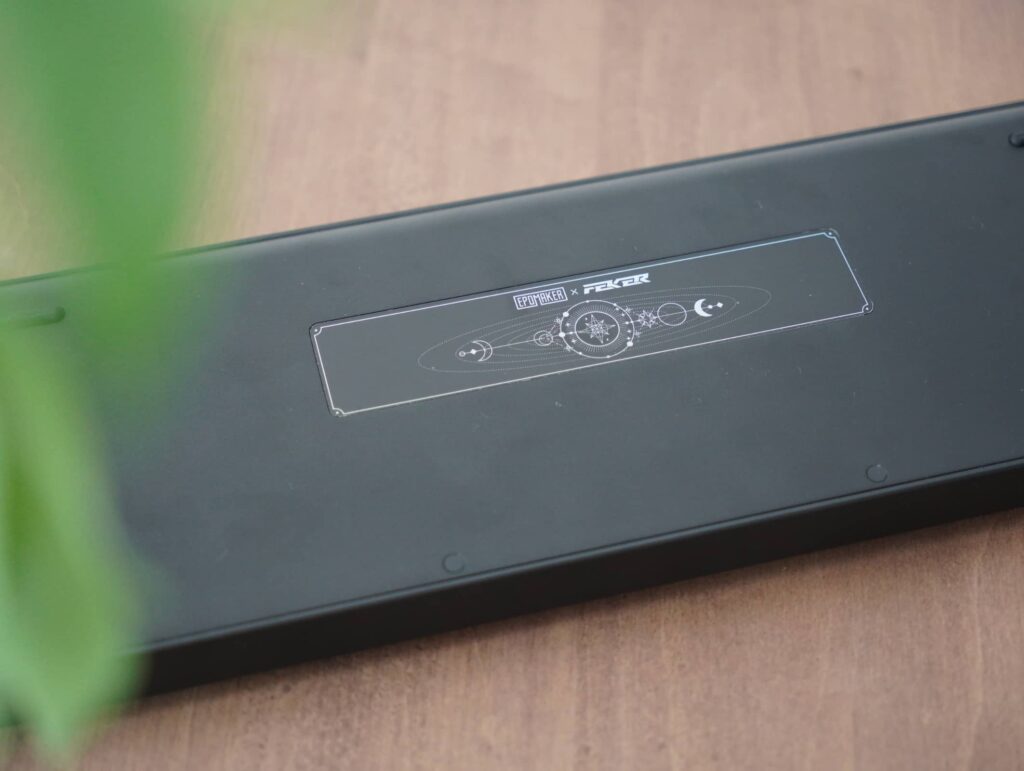

The USB-C port is center aligned, accompanied by the on/off switch and the Mac/Windows toggle. The 2.4GHz USB dongle is cleverly hidden in a small aluminium drawer via magnets, that has an apt Galaxy engraved design.
On the back of the Galaxy80 you’ll find a small plate that initially resembles a backweight, but it is simply a nameplate of the Galaxy80 collaboration between EPOMAKER and FEKER. With this collaboration, FEKER Marble White linear switches are being used in the assembled keyboard.
- Top housing: PC
- Stem material: POM
- Bottom housing: PA66
- Spring length: 20mm single-stage
- Operating Force: 42±3gf
- Pre Travel: 2.0±0.3mm
- Total Travel: 3.5±0.3mm
- Bottom Force: 47±5gf
Typing acoustics & experience
EPOMAKER says the Galaxy80 uses a leaf spring gasket mount, but the internal structure does look more like a traditional gasket mount where the gasket socks are attached on multiple points of the plate. There is also quite some use of foams. Between the plate and PCB you have 2 types of foam – PORON foam and IXPE switch pad. And underneath the PCB you have an EPDM switch pad foam.


Both the PCB and plate feature many flex cuts, with the PCB having per-key flex cuts. The decision of heavy flex cuts and use of gaskets create a rather flexy typing experience especially at the corners. Bottom out is gentle and the feel is quite consistent in the middle part of the keyboard.
In terms of sound, the Galaxy80 has a very typical foam-like sound signature where you get a cleaned up thock sound where there isn’t much upstroke sound but you have more of the deep bottom out. If you like the PE foam mod kind of sound, this would be up your alley. You can take a listen to the stock sound profile below:
Galaxy80 uses plate-mounted stabilisers and the stock performance of it is actually very good. I didn’t hear any rattling or tick sounds at all. The PCB is hot-swappable supporting both 3-pin and 5-pin switches, so it allows you to change the switches into something else in the future.
Connectivity and battery
Galaxy80 offers three modes of connectivity – (1) wired via USB, (2) Bluetooth 5.0, and (3) 2.4GHz wireless. There is a 4,000mAh battery inside but there is no advice of how long it will last. I have using the keyboard for the past week and it is still going strong. You can refer to the Fn shortcuts below if you need them.
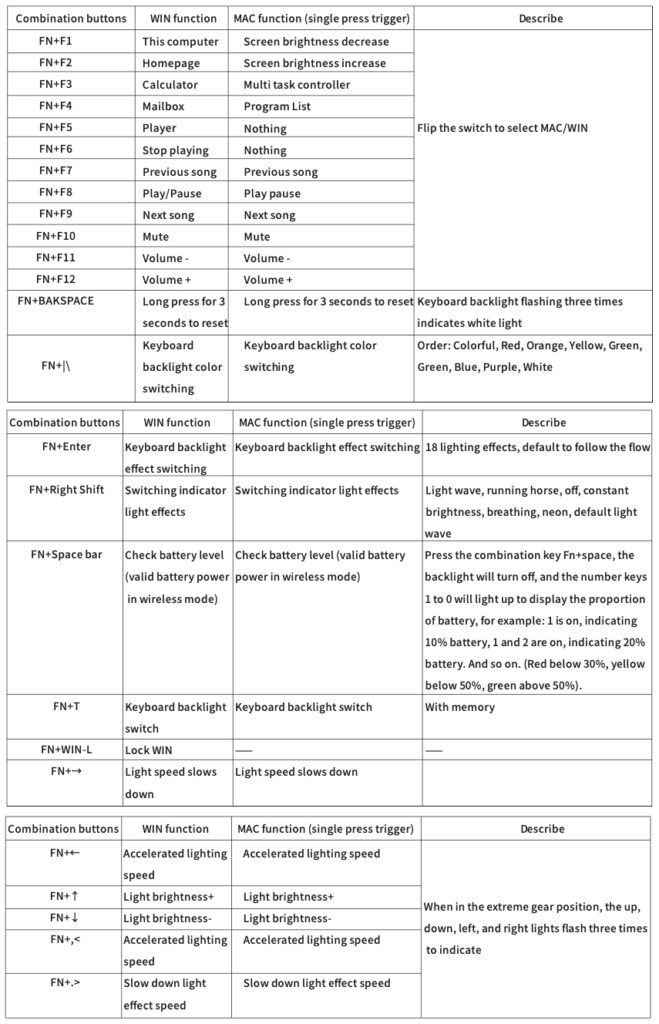

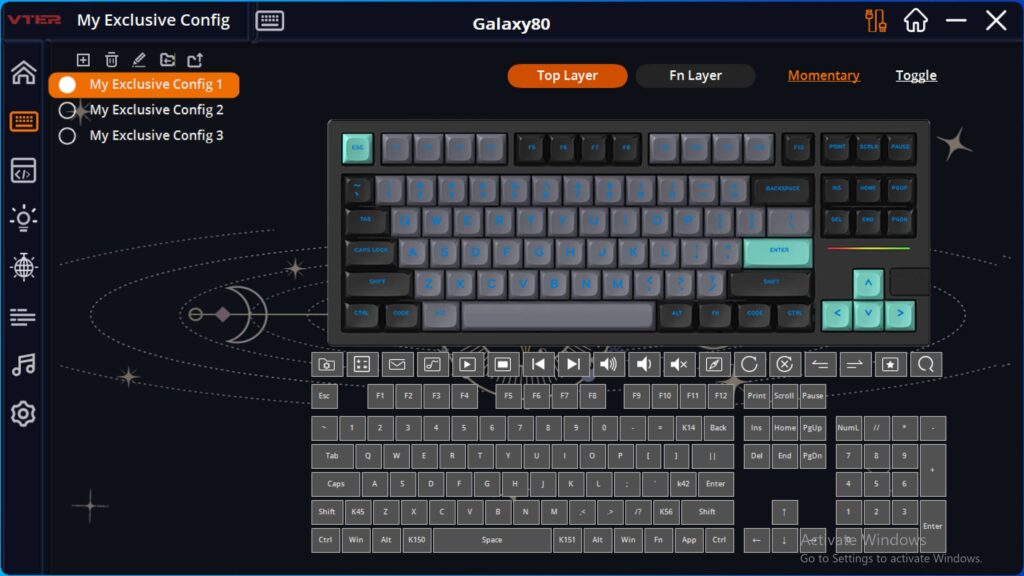

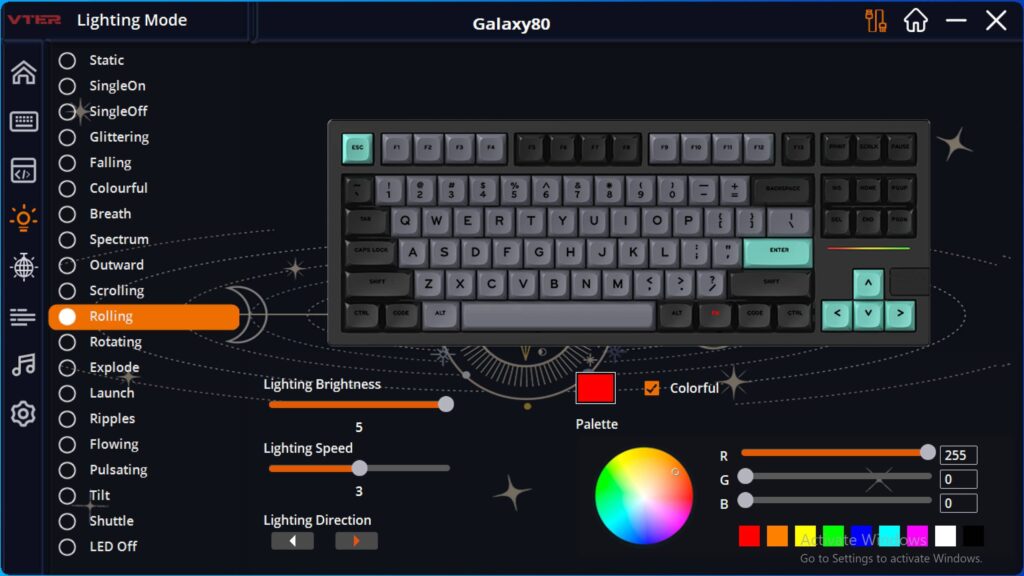

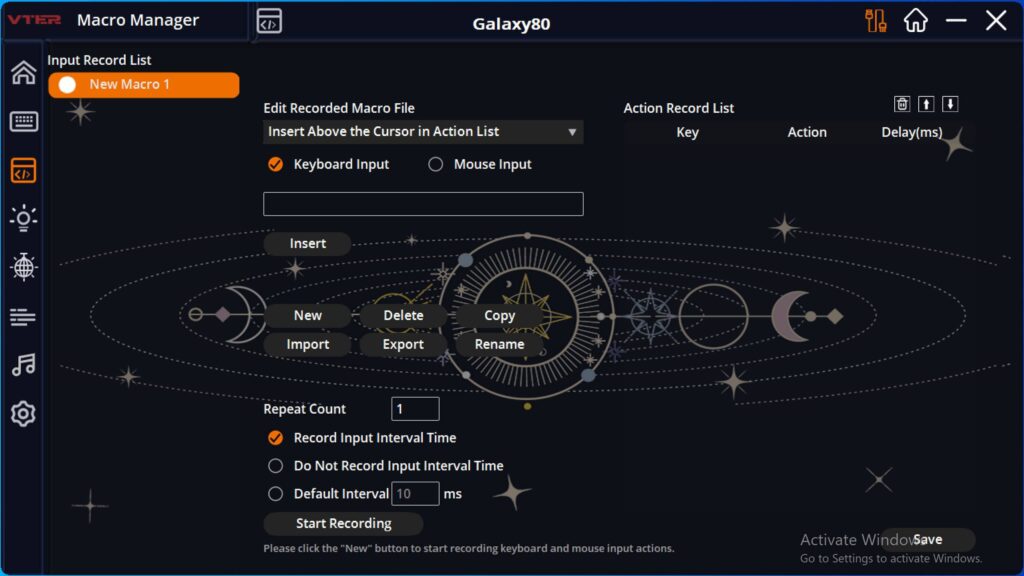

It’s rather unfortunate that we don’t see VIA support in the Galaxy80 as it would have made this keyboard a strong contender in versatility. Instead, you have to use this app found on the support page. and the experience isn’t that ideal even though you can do key mappings, macros, and RGB customisations.
Conclusion
For those who seek an aluminium TKL keyboard, the Galaxy80 presents a solid proposition at its asking price of US$106 providing a good stock performance when it comes to acoustic especially if you prefer lower frequencies. It would have been nice to see VIA support and use of screw-in stabilisers, but at least having a hot-swappable PCB, use aluminium case, and wireless connectivity option creates a strong foundation to build on.

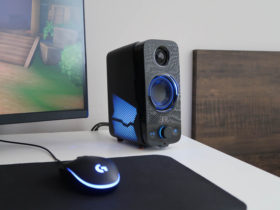
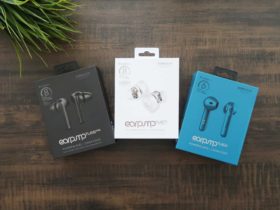
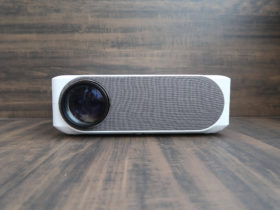
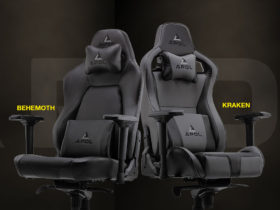
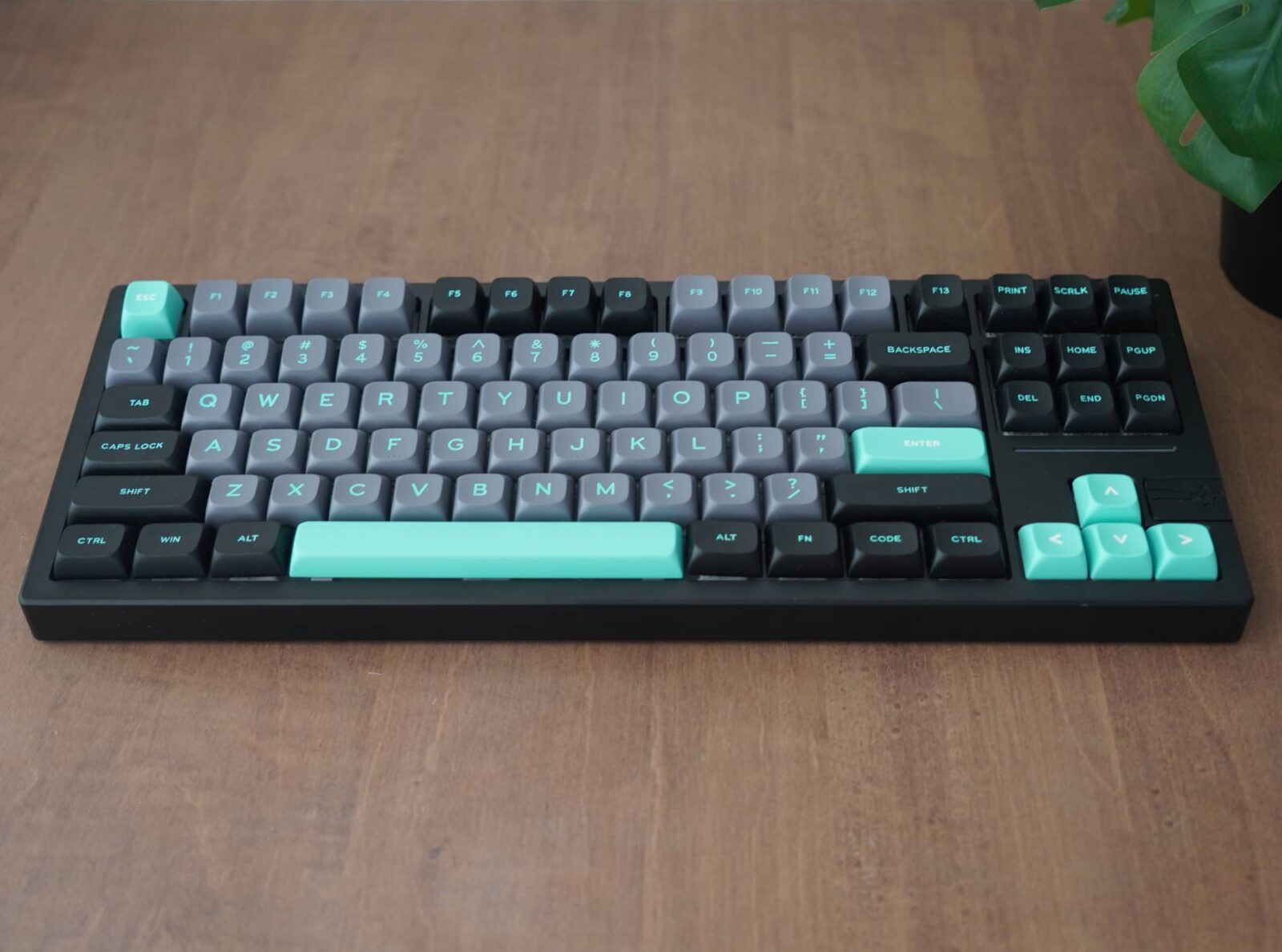
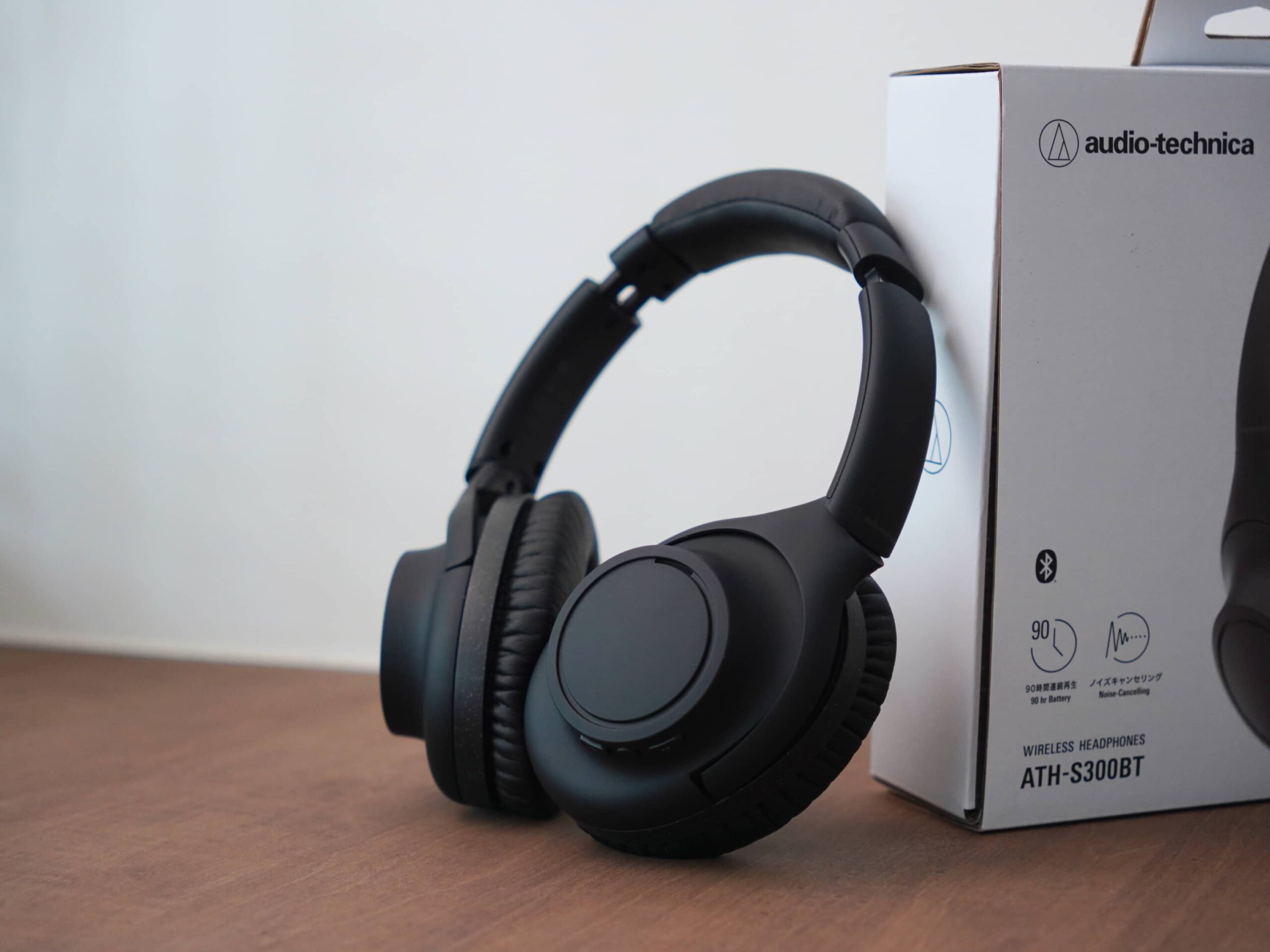



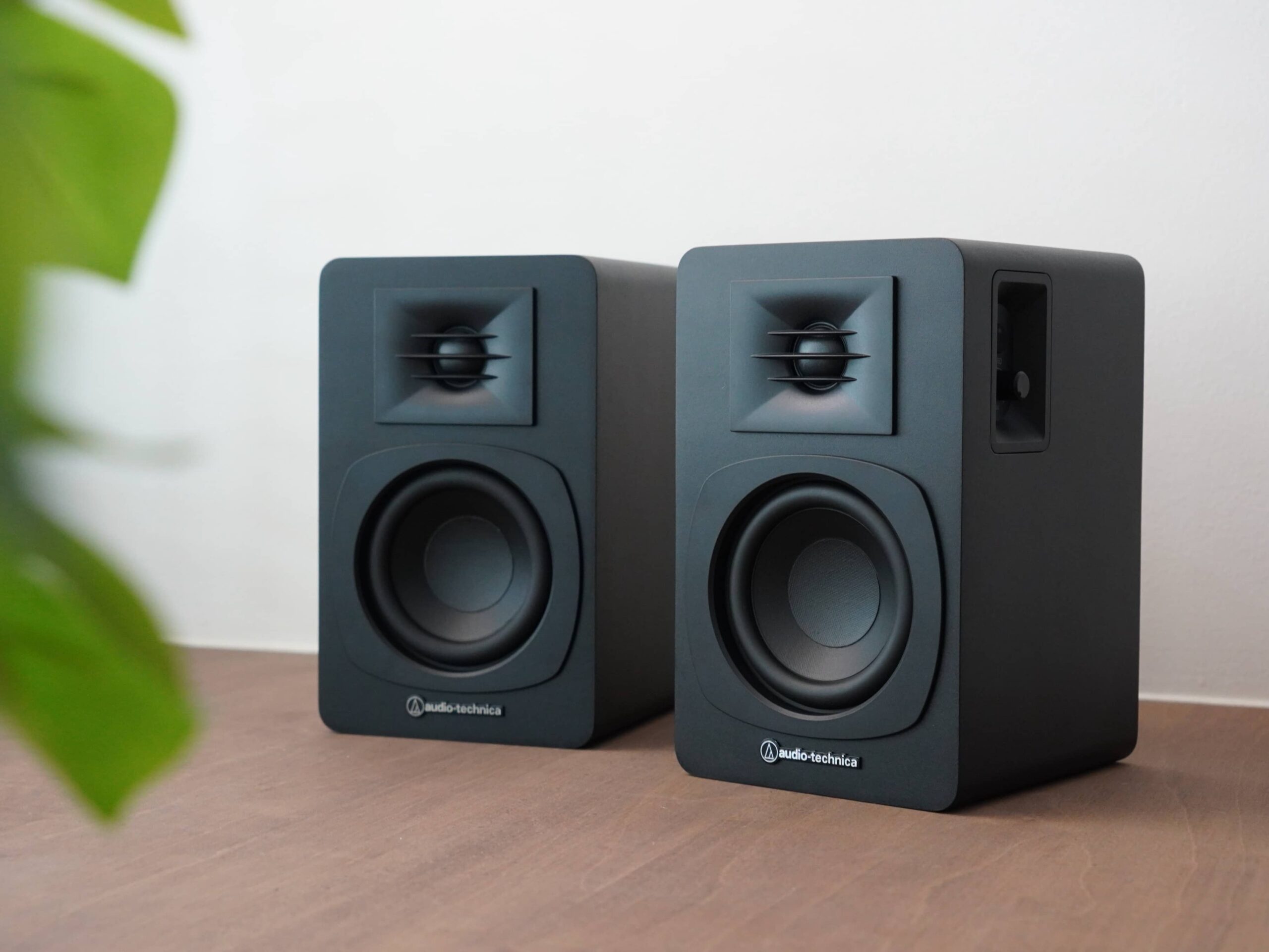
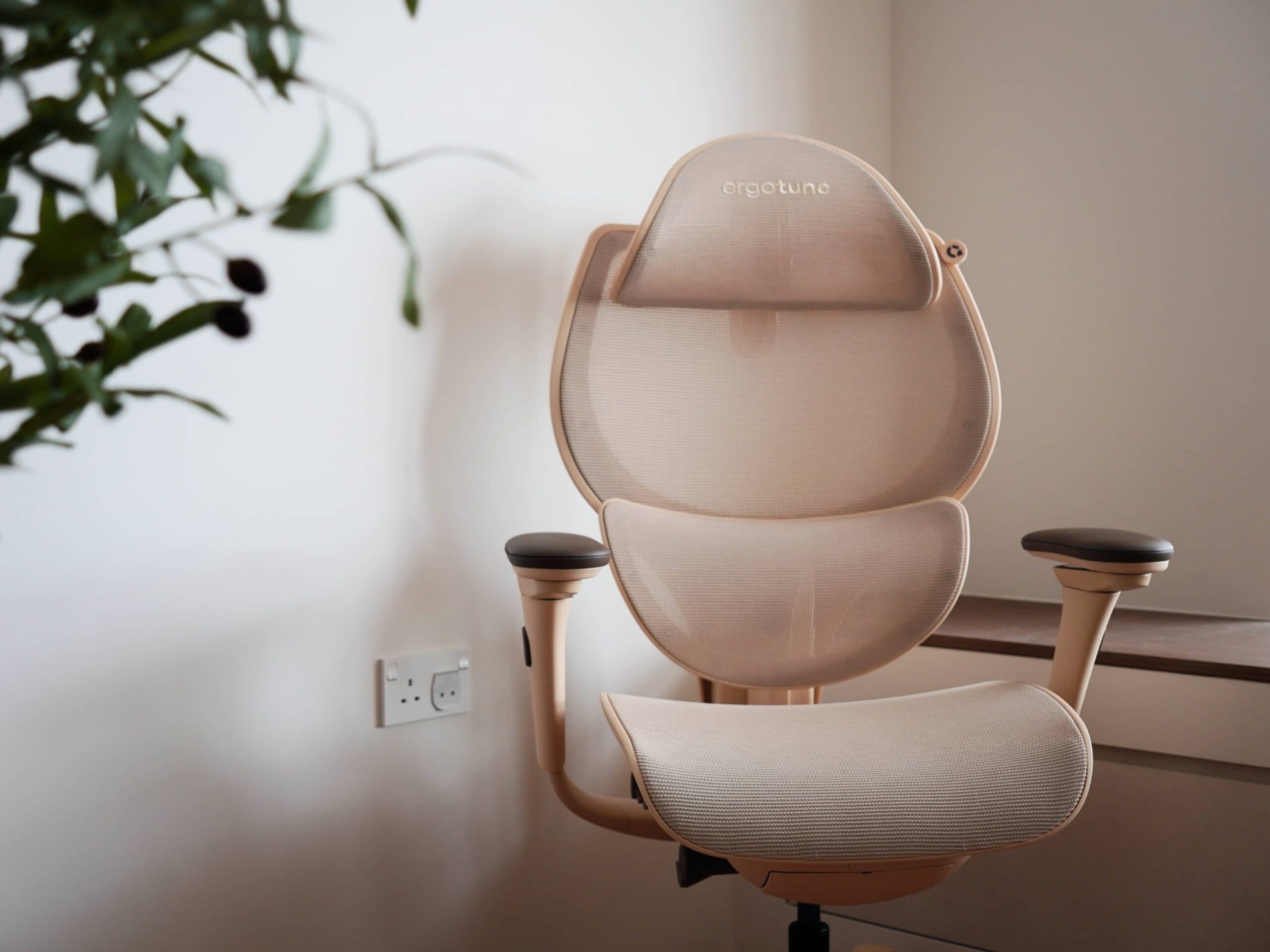
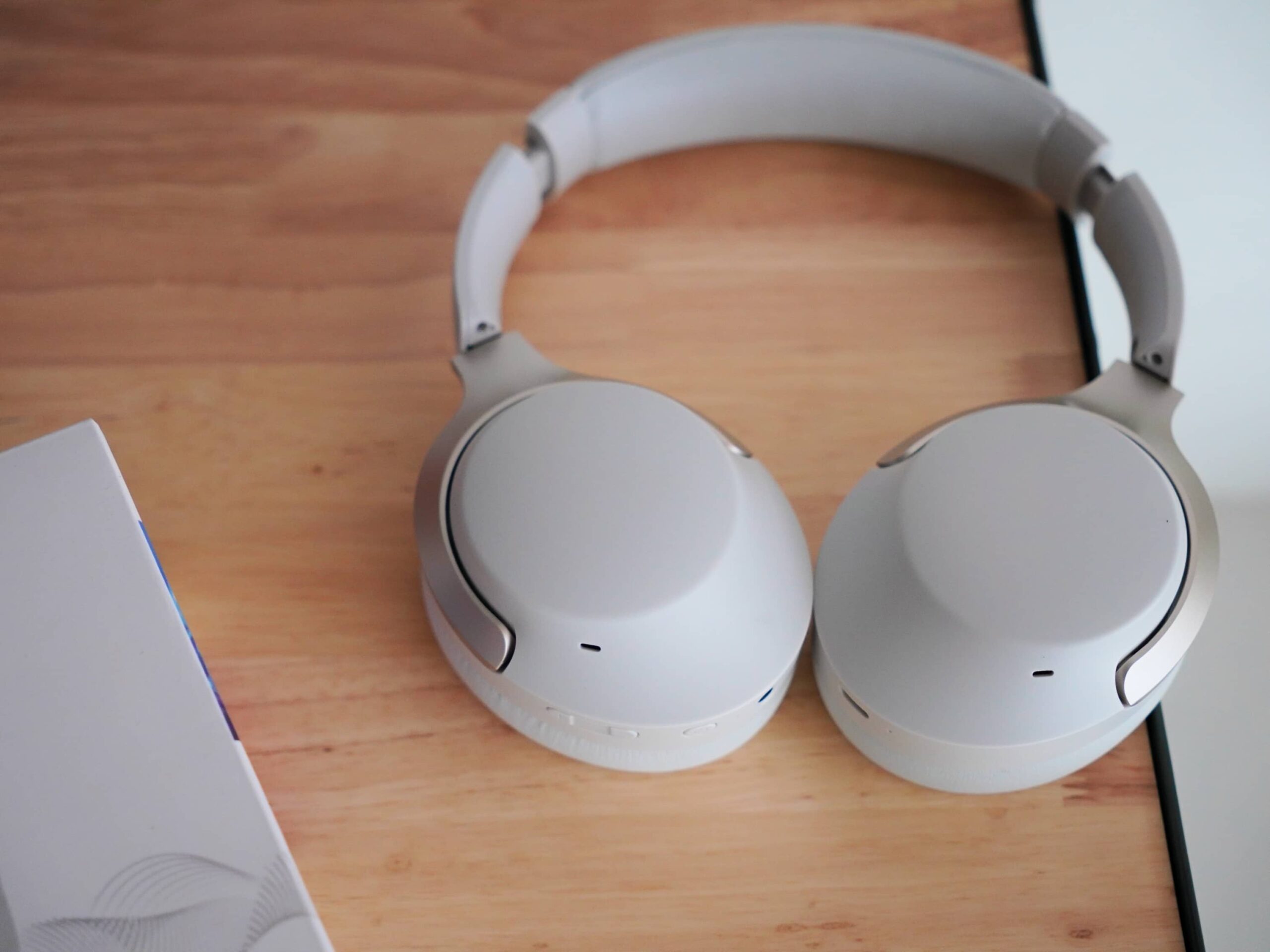
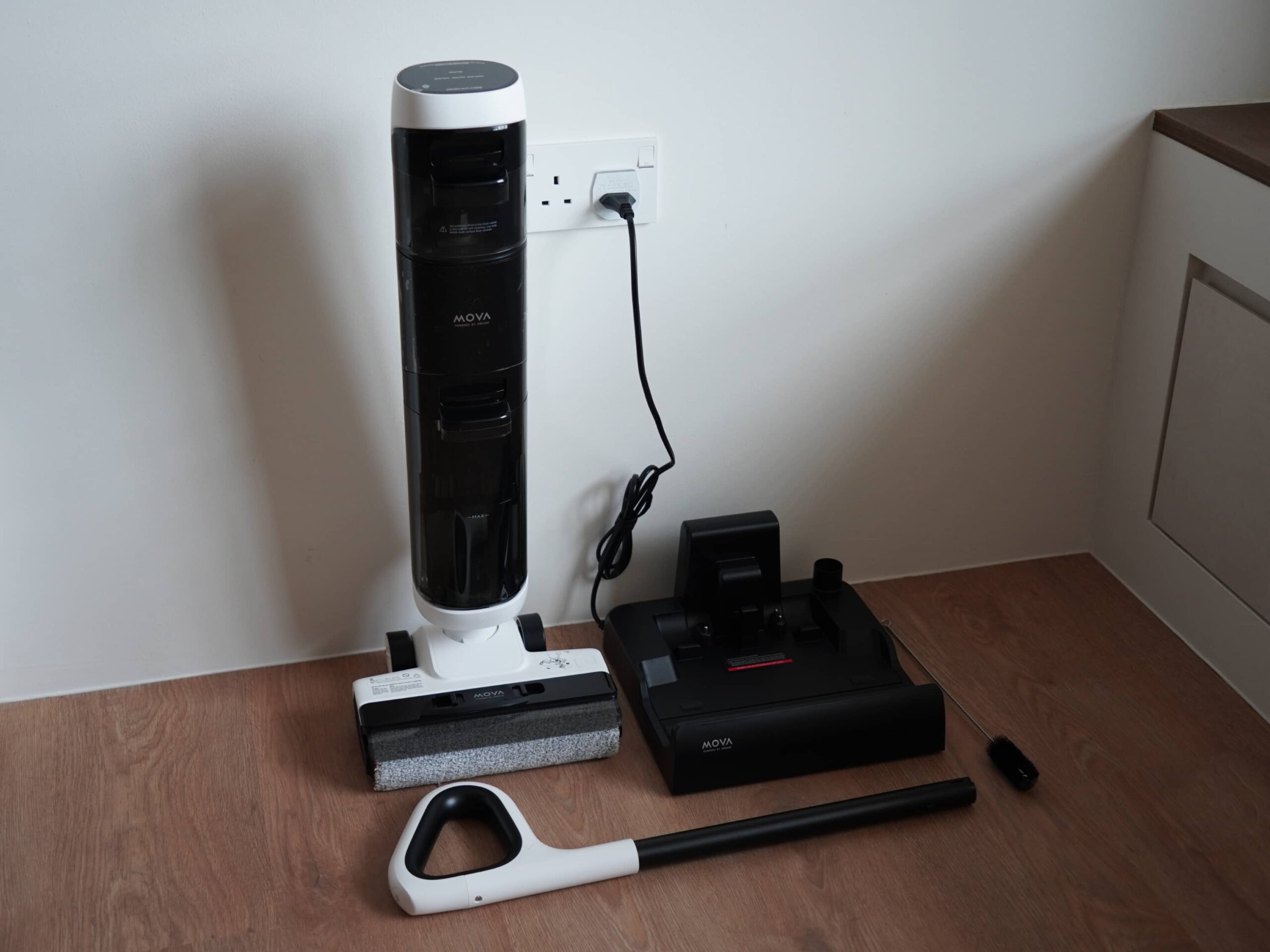
Leave a Reply